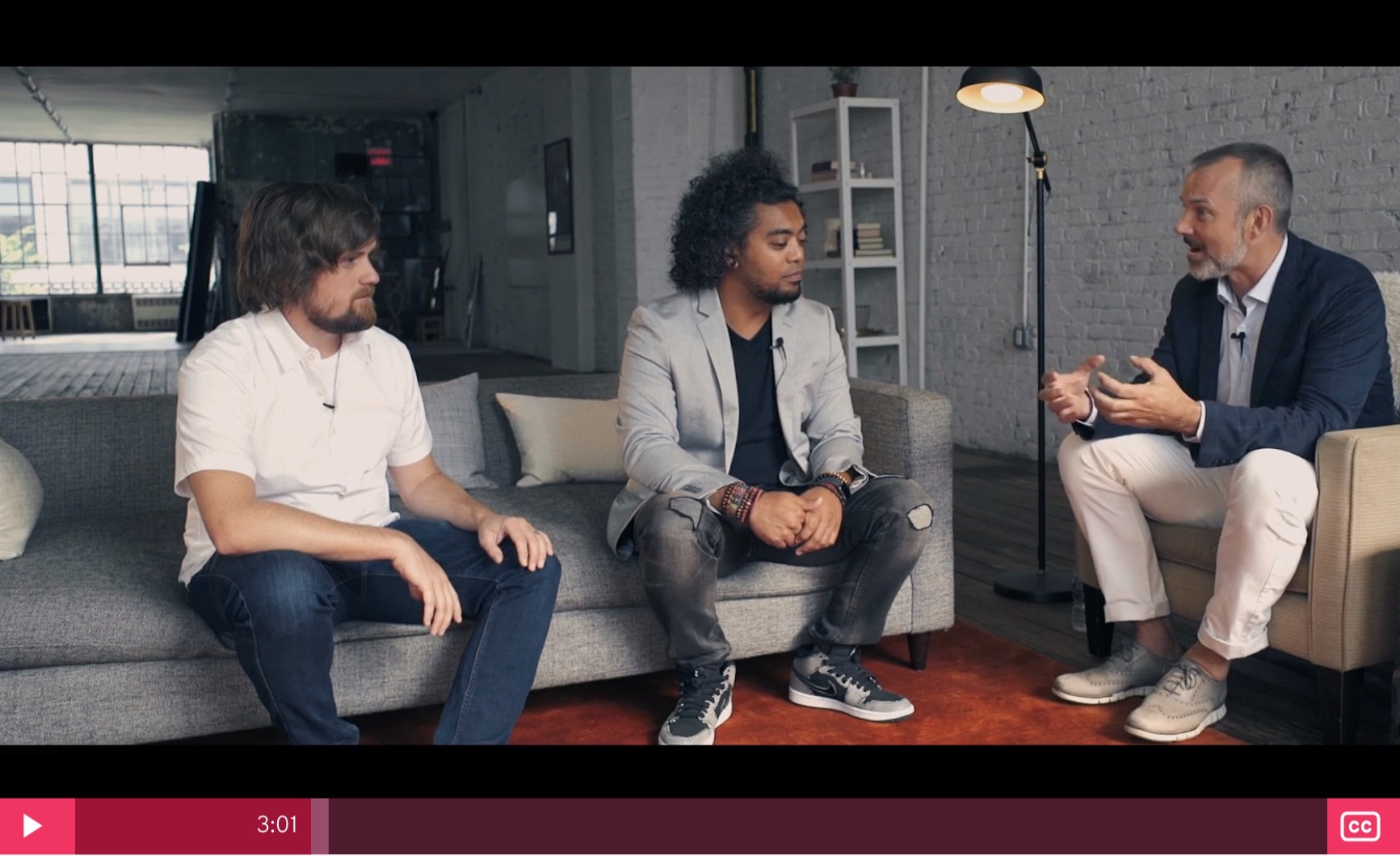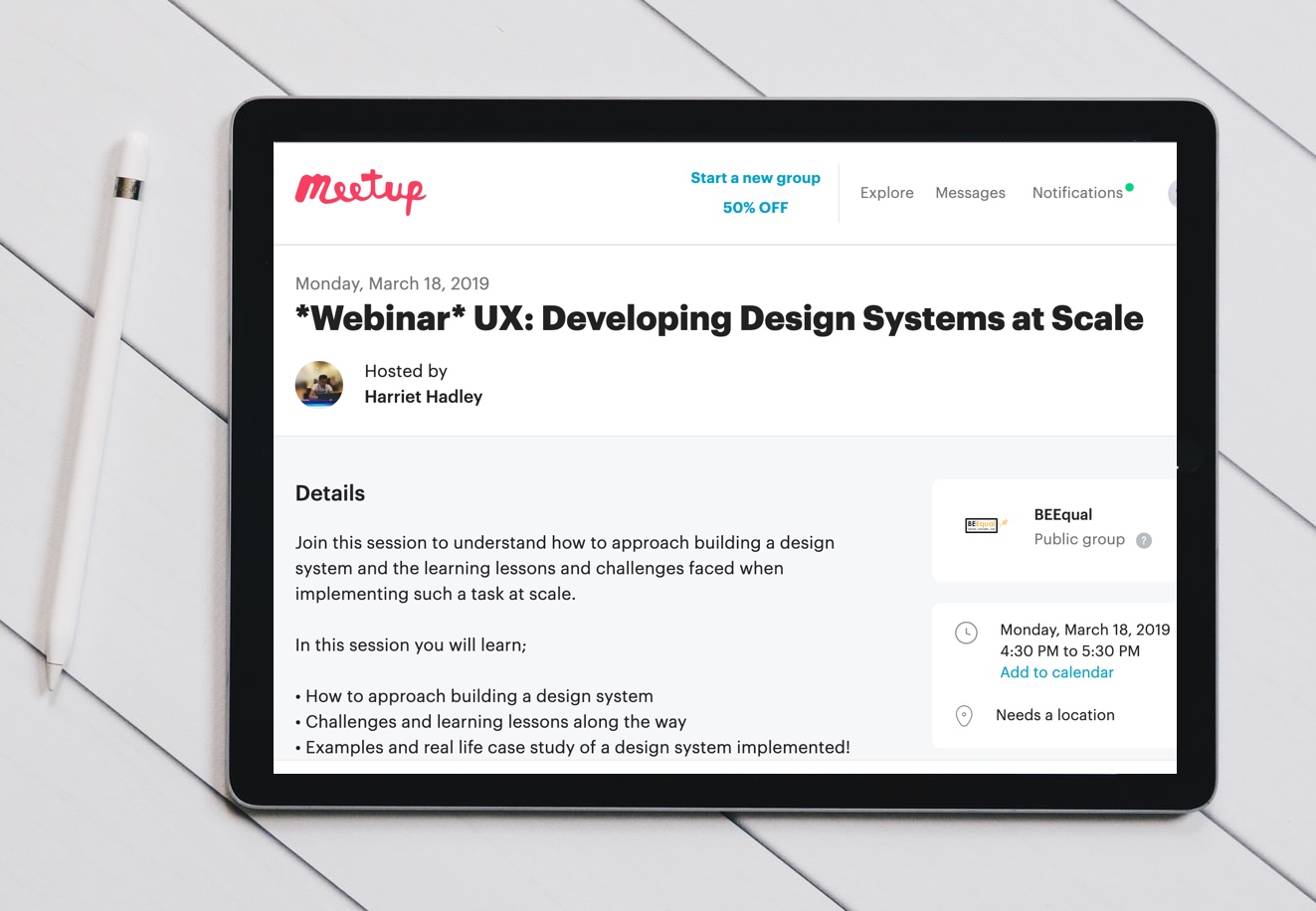If you’re on the job market in the UX design field, chances are you will be asked about design systems in your next interview. Don’t make the mistake of thinking a design system is just a UI kit and forgo preparing for this popular interview topic. “A lot of times, people [UX designers] think a design system is a style guide. It’s important for interviewees to know about design systems and to be able to speak fluently about them.” Says Justin Hanson, Senior Product Designer at Classy.

The allure to implement a design system is everywhere and for good reasons. The positive impact a design system can have on a company’s ROI is undeniable. Companies with holistic and robust design systems are saving time and money. Returns have been seen to increase as the systems evolve. It’s creating new opportunities for UX Designers to join product teams solely dedicated to implementing and evolving design systems.
Design Systems have the power to revolutionize the way product teams collaborate. “It can limit design fatigue, allowing teams to focus mind power on the things that matter – innovating and finding new ways to solve a problem.” Hanson explains. “Asking about them in an interview is a good way to weed out who is BS’ing and who isn’t BS’ing” he adds.
According to Ernie Nieves, UX Executive at Tribridge, “if the interviewer is not asking about design systems, then the company isn’t growing. If the interviewee is not asking about design systems, they need to brush up on their skillset.” Ernie has been in the industry for over 20 years. He’s experienced the difference a design system can make especially when working with complex projects. “Design systems are not just for designers and developers. They are for the business and can save them HUGE amounts of money.”
Ernie recalls a time he worked on a client’s app that had 20 systems implemented with different UI’s, “but you couldn’t tell, it was beautiful.” Ernie’s team studied their design system, “it saved us so much time, so much heartache and so much money.”
Chances are, if you’ve recently completed a UX Design academy or worked for a small company you weren’t exposed to a robust design system. You may have read Brad Frost’s Atomic Design and skimmed popular guides like Shopify Polaris, but how do you intelligently answer questions about design systems in an interview when you haven’t had any hands on experience?
Here are 5 steps to help you impress a hiring manager:
1. Practice describing what a design system is

Experts Brad Frost, Dan Mall, and Josh Clark discuss design system strategies in the Invision DSM video series.
Invision created a video series that is a must watch. It will give you get a better understanding of how:
- Organizations gain stakeholder buy-in, implement design systems, and use pilot projects
- Design systems help developers and designers collaborate more efficiently
- Scaling and maintaining a design system can create new opportunities for teams
While you watch the videos, open a Google Doc and jot down your takeaways. Review your notes and practice explaining what a design system is, how to implement one using a pilot project, and anything else you took away from the series. Continue to practice to a friend, family member, or to yourself in the mirror until you feel confident.
2. Use your UX research skills and gain empathy

Leverage your social media networks and UX research skills to learn more about how different organizations use design systems. You should have a solid understanding of what a design system is at this point, now try to simulate real-world scenarios:
- Determine your problem statement
- Deploy a survey to cross-functional roles using LinkedIn Messaging
- Reach out to experts on design systems requesting interviews
If you’re new to the UX Design field, chances are you may not have collaborated with developers before. This is a great opportunity to get an idea of what it’s like. Derek Dyer, Backend Engineer at GovernmentCIO says the most important thing he looks for, on a hiring panel for a UX designer is “business acumen or how well you can interpret business needs.” More importantly, “can I talk to this person and are they a good cultural fit?”
Based on your research findings:
- Look for trends and draw conclusions on design systems
- Develop personas for cross-functional team members
- Create an empathy map for your personas
Now imagine how much easier it will be to discuss design systems in your next interview. UX designers are taught to have empathy for their users. Talk to members from cross-functional teams such as developers, product owners, UX designers and stakeholders to dig deeper. You will walk away able to speak more eloquently & passionately about the subject.
3. Attend a live Q&A webinar about design systems

Attending a live webinar is a great way to get specific questions answered by an expert. Go to MeetUp and use their search feature to look for groups specializing in design systems. Next, look at their calendar of events to find remote webinars:
- Research the speaker and develop a list of questions before the webinar
- Connect with other attendees and speakers on LinkedIn
- Actively participate in the webinar, ask your questions, give feedback, and listen
Connecting with speakers is an important step. They will continue to post valuable content that will help you stay on top of trends. If something relevant pops up the day of your interview, leverage it to show the hiring manager you are keeping up on timely UX information.
4. Create a research findings presentation
You’ve put the time in to learn more about design systems and empathize with other designers, developers and product owners. Why not create a presentation on your research findings to further display your efforts?
Rainey, a UX designer, was recently hired for SAP’s rotational program and is currently on the design systems team, “it’s so rare to find someone with experience in design systems. It’s a huge work in progress for us.” Wouldn’t it be great to be the diamond in the rough and have a case study to present on design systems?
- Use Google Presentation and embed your findings into a written case study on your portfolio blog or Medium.
- Share your article on LinkedIn with an opportunity for others to interact with their feedback, such as “what’s your experience been with design systems?” and you can continue to update the article with new findings.
- Reference the case study in your interview. If the hiring manager hasn’t reviewed it yet, work it into your thank you email with a hyperlink to the article.
It’s always a good idea to have a mentor or fellow UX designer review your case study before you share it publicly. Get constructive feedback and polish your work before publishing live.
5. Develop a list of questions
When Justin Ramedia, VP of UX at New York Life is interviewing he looks for, “curious minds — it doesn’t require a depth of background. You should always come with the questions, not necessarily the answers.”
Find out if the company you’re interviewing with has a design system in place and if so what problems are they solving with it? What is it they want to find out about you and design systems? If you’re an entry level candidate, they may want to ensure you understand the benefits and potential pitfalls of a design system. Or maybe they want to know that you’re familiar with iOS Human Interface Guidelines and Material Design and can apply these principles to existing products.
Hiring managers may just want to ensure you’re a good cultural fit, but as a UX designer you should always be curious to learn more.
Cautionary Advice
Hanson agrees creating a design system case study can set you apart, but adds a cautionary piece, “I don’t think it’s the golden ticket to getting a job, not every designer should be as interested in design systems as someone who is responsible for them.”
Although chances are even if you’re not the one leading the charge on a design system, you will likely be involved. If you’re transitioning to UX design from a completely different field such as teaching or accounting, conducting a case study on design systems gives you the opportunity to gain experience collaborating with developers, product owners, and other UX designers – an undeniably important skill a hiring manager will definitely assess.
Final Thoughts
The next time a hiring manager asks you about design systems, you will be able to intelligently respond. If you truly follow these steps, you will no longer lack hands-on design system experience. You can be the rare bird that goes above and beyond and land your dream job.
“I’ve hired UX designers— with no experience who showed confidence and optimism. To go above and beyond isn’t the norm and they turn out to be some of the best UX designers I have worked with.” — Justin Ramedia, VP of UX at New York Life
Ready to get your feet wet in Interaction Design? In this article we touch briefly on all aspects of Interaction Design: the deliverables, guiding principles, noted designers, their tools and more. Even if you're an interaction designer yourself, give the article a read and share your thoughts.